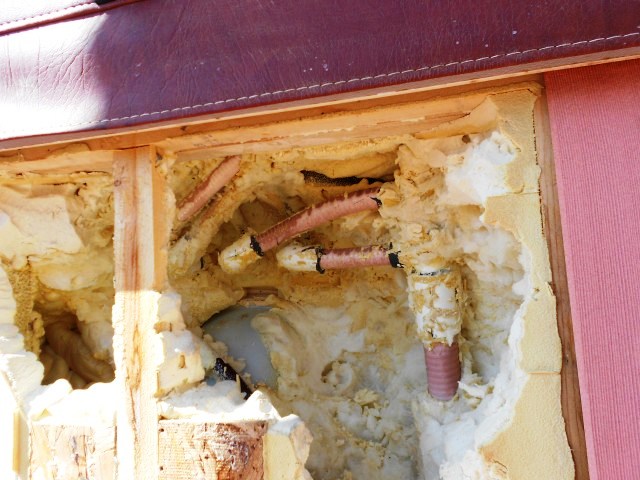Money – there is never enough of it. A few weeks ago, I turned my hot tub down to it’s lowest setting (80 degrees) to save some electricity as I was traveling out of town. I’ve actually left it at that setting for nearly a month. I received my electric bill the other day and was kind of surprised at how much it had dropped.
 That got me thinking, I need to do something to permanently
That got me thinking, I need to do something to permanently save on electricity… er… save myself some cold hard cash. I bet you do too! Spending our hard earned money on things that can be done for free, or nearly free, is a bummer.
This excercise isn’t much different than what I started my sailboat before selling it a year ago. The big difference is that the boat had a limited supply of power and I had to use it carefully and wisely whereas our homes have an unlimited supply but it costs money. We can all look around our home and pretty easily spot the obvious “big consumers”. I have a gas powered oven/range, clothes dryer, central heat, and hot water heater. With that in mind, I suspect the big consumers during the winter months are, in order, hot tub, the fan for the central heat (gas), refrigerator, and lights. Some of you may have only electric powered appliances and/or heat which may change your results.
One way we can save some immediate money on power bills is to either turn off the hot tub or create a permanent solar heater for it. We decided on the latter because soaking time in the tub is really nice. There are a boat load of articles on the Internet about how to do this type of thing so we are most certainly not coming up with cutting edge technology here. A few years ago we created a very crude solar hot tub heater. It worked really great but was manually operated. It was nothing more than some black plastic PEX hose that was coiled up in a big spool on the garage roof and a 12 volt sump pump. The exact numbers are difficult to recall but seems like we had water coming out of the hose at 135 degrees at one point and the hot tub getting up to 110 degrees which was too hot to get into. Given that success, we are going to clean up this approach and automate it. The whole setup is pretty simple with a controller to sense the temperature of the water in the hot tub and in the collector and cycle the pump appropriately being the most complicated part. I encourage you to give it a try and see how much you can save on your power bill!
Another way to save some money on our power bill is to reduce the amount of time that the heater fan needs to run. This can be done with a solar air heater. Again, not rocket science. It is simply a matter of building a collector thru which air from inside the home is passed. The circuit to control a fan once again being the most complicated component. We also have some pretty significant cold air leaks in the house so we’ll be addressing them too.
Finally, using LED lights instead of incandescent and/or halogen may make a difference so we’ll pursue that.
Those are the three areas that are fairly cheap and easy to address. It would be really neat if we could all run our entire home exclusively from a a big photovoltaic (PV) solar array on our roof, a big battery bank in the garage, and all the fancy electronics to control the thing. However; most of us simply do not have the tens of thousands of dollars that this requires. So, let’s start small. Our goal does not need to get off the grid; rather, just become a minimal user of it.
I’m a data guy – love the stuff. Normally I would spend some time calculating how much power the hot tub consumes so I can evaluate the result of my efforts. However; the tub is 220 volt and direct wired and I don’t have any equipment to measure that kind of voltage. So, my power bill will just have to be the measure of success. However; tools do exist that can measure the power consumption of 11o volt plug-in type devices (like the fan for central heat and air) and they don’t cost of boat load of money. One such device is the Killawatt. I have started doing some of this measurement. I encourage you to get one of these Killawats and start recording some numbers. A reader also told me about the Brultech ECM-1240 home energy monitoring product. This appears to be a very capable and affordable product which is worth our investigation.
I’ll document my progress here. Hopefully we can get something in place quickly and all of us can save some money over the coming winter months!



Leave a Reply